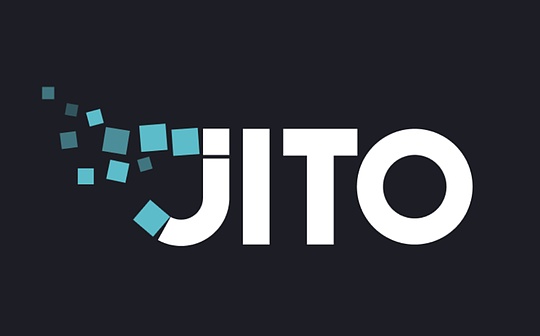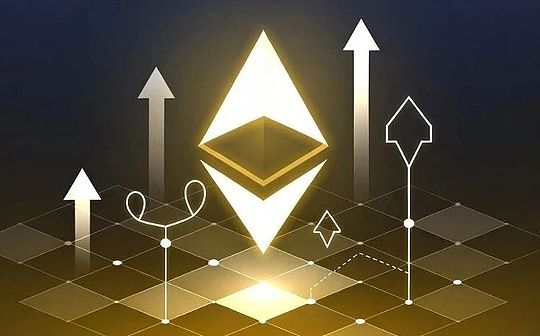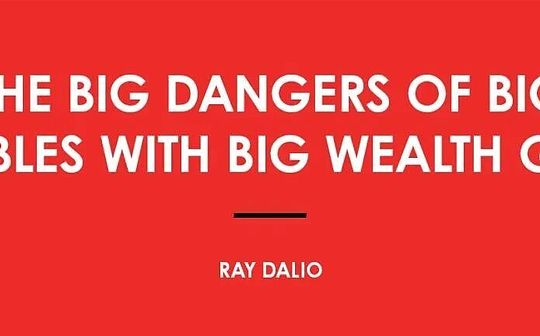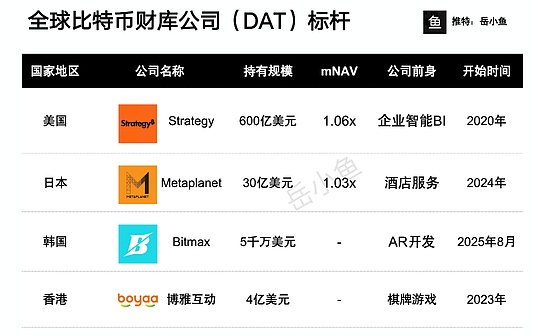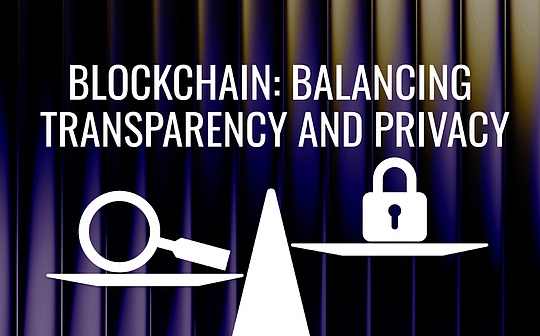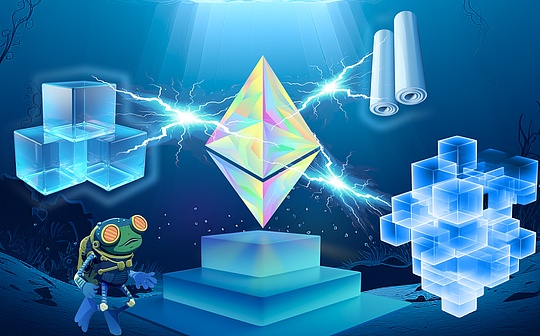
author:knower Source: substack Translation: Shan Oppa, Bitchain Vision
RaaS is a controversial topic given the perception of rollups (L2 and L3).You either support platforms like Caldera and Conduit, making rollup extremely easy or think we already have too much block space, and these tools make no sense.My opinion is somewhere in between, but both sides have strong arguments.I think rollup infrastructure is net positive for this field (no matter how small it is), but I also understand why some people think this technology is not going to drive the popularity of cryptocurrencies.
L2 Beat shows about 55 running rollups——The top five (Arbitrum, Optimism, Base, Blast and Mantle) account for 82.74% of the market share.I’m not sure we should interpret this as a symptom of homogeneity of rollup designs or a lack of interest in the vast majority of rollups – maybe it’s a combination of all three.
Arbitrum and Optimism are obviously the most mature rollups, now it’s more like a “real” chain (rather than an affiliate chain of Ethereum).Base has a very active community, although its TVL is smaller, but it is probably the most promising rollup right now – a similar situation applies to Blast, but I don’t think their higher TVL is higher than Base in the absence of gamified points programThe community built with help is more attractive.Base even made it clear that there wouldn’t be tokens, but no one minded, as this was the first rollup to see organic activity—even Arbitrum and Optimism were ploughed heavily before the airdrop announcement.
Mantle is a rollup that I’m very unfamiliar with, but I briefly browsed their ecosystem and thought they had an advantage over Mode, Manta, and even Scroll.Their development depends entirely on TVL’s inflow and new application deployment, both of which are waiting for further notification.
Worse than 55 running rollups are the 44 upcoming rollups listed by L2 Beat.These 44 use a variety of different designs (such as Optimiums and Validiums), but ultimately they are all competing for the same market.Few running rollups can jump from “modular execution layer/Ethereum affiliate chain” to “just happen to be the dominant chain of L2”.
The success of L1 stems from years of accumulation of developer talent into a fundamentally stable underlying layer, giving the community the opportunity to form and create an ecosystem around it (think Solana’s meme coin casino period, Ethereum’s DeFi fanatic summer, and even Bitcoinordinals on).The practicality of rollup comes from its shared security with the underlying layer—99% of the time it is Ethereum, unless you are discussing Solana L2—and its relatively low transaction costs.
I thinkTechnology alone is not enough to gain significant awareness or market share for rollupsThis can be seen from the fact that some of the “strongest” technologies such as Scroll, Taiko and Polygon zkEVM are not even able to shake in TVL games.Maybe these teams will indeed see an increase in TVL in the long run, but based on current sentiment and lack of pursuing this goal so far, I can’t see any signs of this happening.No, your eight users don’t want to have another Galaxy event, they certainly don’t want points that can be redeemed for non-transferable tokens.
How would rollup feel if you put yourself in the perspective of a brand new investor who knows nothing about cryptocurrencies?I’m not sure if you’ll be thrilled when you see the 15th zero-knowledge rollup with EVM equivalent zkEVM, unless it has some meme coins you can make money.
Most of the analysis of the simple browsing of L2Beat seems quite pessimistic, but as long as I am not the one who invests liquidity funds in L2 or L3, I am still satisfied with it.I don’t think more and more rollups are bound to be a bad thing for this field, but we should talk more straightforwardly about the practicality that comes with it.Many applications have become specific app chains (such as Lyra, Aevo, ApeX, Zora, Redstone) over the past few months, and I suspect this trend will continue until everyone goes L2 from Uniswap to Eigenlayer.
So, while we can’t stop the number of deployments of new rollups, we can at least honestly discuss its impact on cryptocurrencies.We have too much block space and the Ethereum mainnet doesn’t even need any extra block space—it’s probably only $10 for a transaction now, and that’s been going on for weeks.
There is almost no difference between RaaS providers like Conduit and Caldera (don’t attack me), and the reason I say so confidently is that I hope someone can correct my mistakes.Here is a brief overview of their respective rollup deployment process:
-
Conduit provides OP Stack and Arbitrum Orbit; Caldera provides Arbitrum Nitro, ZK Stack and OP Stack
-
Conduit provides Ethereum, Arbitrum One and Base as settlement layers; Caldera does not list settlement layers, but I think it should be similar.
-
Conduit’s data availability (DA) options include AnyTrust DA for Ethereum, Celestia, EigenDA and Arbitrum; Caldera offers Celestia and Ethereum, and plans to integrate Near and EigenDA soon
-
Conduit allows the use of any ERC-20 as a local gas token; Caldera allows the use of DAI, USDC, ETH, WBTC and SHIB (???)
Overall, the two platforms are very similar.I think the only difference may come from the actual consulting experience provided by the team.I haven’t spoken to either of these two teams yet, so I’m sorry if the content seems sloppy or inexplicable, but I think they’ll appreciate the honest view of RaaS and its status quo.We will know the result soon.
I’ve considered making my own rollup for fun, but I really can’t prove that spending $3000 a month on a virtual chain is justified (unless there are venture capital willing to send me a private message, then we can talk about it).
To sum up, I love RaaS and hope that everyone who works on this work will continue to work hard.I don’t really think it has any problems, thinking “too much rollup” is a stupid stance, especially given the current situation of our industry.
Regarding the current situation of our industry, it is time to briefly discuss some of my dissatisfaction with Restaking, LRT, AVS and Eigenlayer.I still want to write a bigger report, so I will keep it short here.
Eigenlayer has a large amount of ETH deposited, with about 5.14 million as of today.I had thought most of the funds would disappear after the points program ended, but the world’s most disappointing airdrop announcements did not cause TVL to escape to a better place, but instead increased.I think anyone who expects Eigenlayer’s airdrop to easily increase the deposit by 20-25 times may be deceiving themselves, but I didn’t expect that they have blocked almost all major countries after this.Enough Twitter has expressed dissatisfaction with the double standard of Eigenlayer (including my own), but I really don’t think it’s worth discussing anymore.
The team also released a huge white paper explaining the role of EIGEN and introducing a new concept called “subjective mutual benefit”.No one really understands what this means, nor does anyone write a post to discuss it, because EIGEN was initially non-transferable, which is a big problem for anyone who wants to build a community around its agreement.If you can’t get people rich through tokens or the ecosystem surrounding them, people will turn their attention to having possible ways to make money (like meme coins).
I have no objection to Eigenlayer or the team.I want to make this clear.
Unfortunately, I have an opinion on restaking and the basket of AVS on the Eigenlayer whitelist.Eigenlayer has deposited more than five million pledged ETH, and you would think people can get good returns because of this, right?I’m going to tell you that this assumption is wrong.I’ll reference a specific dashboard multiple times, so here’s the link.
If you consider the practicality of restaking, you will guide economic security from the world’s most economically secure cluster of blockchain validators by default.You invest various stETHs into restaking platforms like Eigenlayer (or future Karak and Symbiotic) to get higher returns than the attractive stETH benefits already available.My problem is that restaking itself does not generate an inherent income – the income must come from AVS in Eigenlayer.If you are a restaker, deposit 10 stETHs in Eigenlayer and delegate these restaken ETHs to operators like ether.fi, you have to trust them to choose the right basket of AVS to generate profits for you.
But where exactly do these benefits come from?
There is no new clause promise at the Ethereum protocol layer, and if ETH stakers risk using the restake agreement, they will receive more rewards.The revenue can only come from one place: tokens issued by AVS (Active Verification Service) itself.
I’m not an expert, I know most of us don’t claim to be experts either, but I have a hard time understanding why no one has raised this question on Twitter.Of course, bigger questions like bad airdrops and the survival risks of Ethereum security are prioritized, but no one has asked what will happen once Eigenlayer launches and eventually enables the penalty mechanism?
What motivation do I have to keep depositing my money when a) the team is not discussing any actual figures about potential gain generation, b) there is no reason to hold more than $10 million in AVS but hold more than $500 million in restaking ETH?assets?
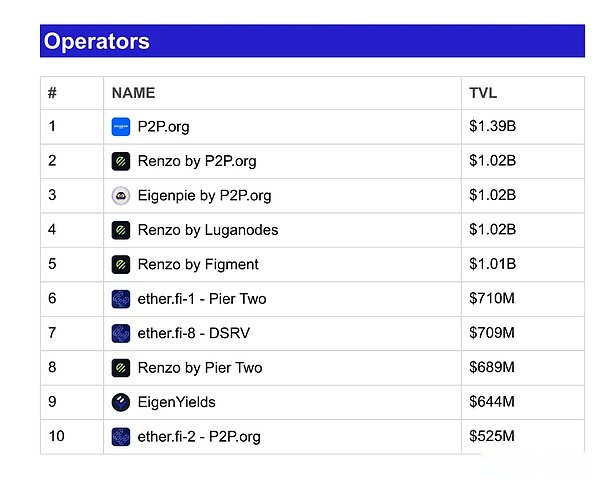
This puts us in a (let’s call it reality) scenario where the top ten operators on Eigenlayer have an average of 5 AVS registrations each and have significant overlap with each other.Eigenlayer is smart enough to announce that the fines and confiscation mechanism will not be launched in about a year, allowing everyone to adapt to the new reality of re-pled.Considering that no one has discussed the risk of restaking except Gauntlet and Mike Neuder, this is a wise move.Although both writing is of high quality, because AVS does little to do anything, it does not provide any specific examples.
As I said before, the benefits of Eigenlayer are very cool – and that’s undeniable.But is it really necessary to restake nearly a billion dollars of users for ETH to provide to every emerging protocol and let them take future risks?The penalty confiscation mechanism has not been enabled, but will be enabled in less than a year – are operators fully aware of their restaking risks and how this risk accumulates with each subsequent AVS registration?
I’m not sure.
Perhaps we will see several other re-pled platforms slowly erode Eigenlayer’s market share, ideally rewarding AVS with less re-pled ETH, while gradually finding product market fits, rather than the other way around.

